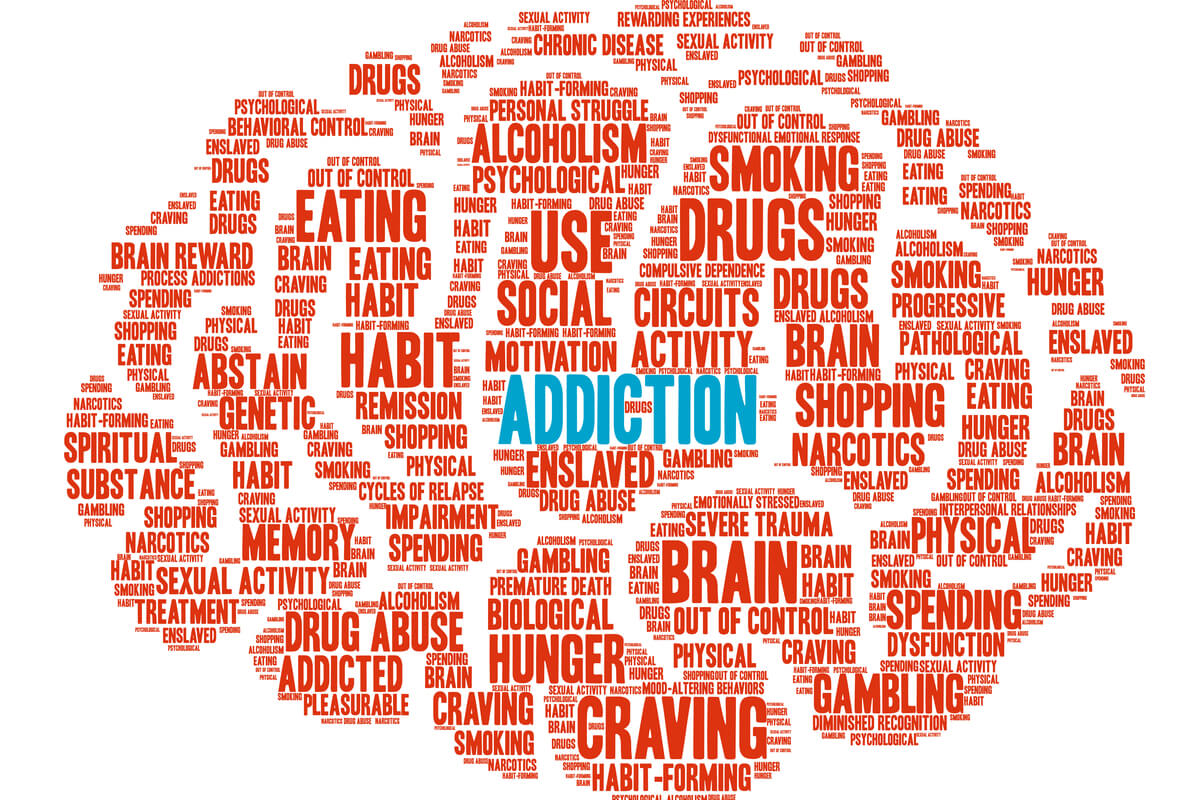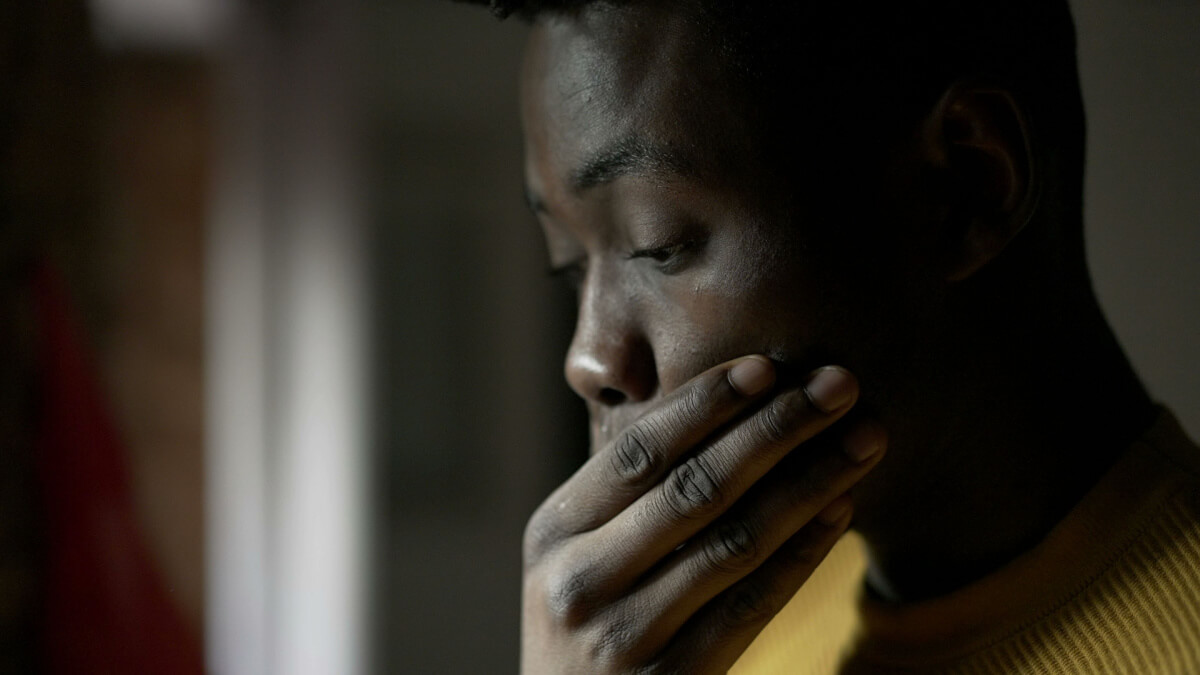
Drugs and alcohol affect the brain in many important ways, and chronic substance misuse can lead to addiction, which can change brain chemistry, structure and functioning. These brain changes can contribute to the development, progression and manifestation of substance addiction. But fortunately, many of these effects can be reversed when you enter a treatment program and quit misusing substances.
How Do Drugs Affect the Brain?
Quick Answer
Different drugs affect the brain differently, but drugs of misuse like opioids, stimulants, alcohol, benzodiazepines and marijuana bind to receptors in the brain, activating them and releasing various neurotransmitters, such as dopamine, serotonin and norepinephrine. They may also prevent the brain from recycling these neurotransmitters back to their transporters, which can interfere with typical communication and functioning.[1]
Substance Addiction is a Brain Disease
Addiction, also known as substance use disorder, is an extremely misunderstood and stigmatized condition, and there are a lot of misconceptions about what it is and what causes it.
Substance addiction is a complex and chronic brain disease, which means it includes many neuroadaptations or brain changes.
These neuroadaptations reinforce drug misuse and addiction and are an essential reason for the development and progression of the condition. The brain disease of drug or alcohol addiction then manifests as compulsive substance use regardless of negative consequences.[2]
How Do Drugs Work in the Brain?
Different drugs and drug classes have different mechanisms of action, which means they can affect the brain in different ways. Some drugs like cocaine and Adderall are central nervous system (CNS) stimulants while others, such as alcohol and benzodiazepines, are depressants. Some drugs, such as LSD and psilocybin, cause hallucinations or sensory changes while drugs like opioids help reduce pain.
Drugs Cause a Surge of Dopamine
However, one thing most drugs of misuse have in common is that they affect the mesolimbic dopamine system in the brain, which is responsible for reward and pleasure. They increase dopamine levels in the reward system. Dopamine is the neurotransmitter responsible for feelings of pleasure, well-being and reinforcement.[3]
When a person uses drugs like alcohol or opioids, they experience a surge in dopamine levels, which causes euphoria or a “high.” This high is much more powerful than natural rewards like sex or eating and the brain remembers this enjoyable experience, causing people to want to repeat the behavior.[3] In this way, substances hijack the reward system of the brain.
Drugs Affect the Opioid System
Besides the dopaminergic pathway, another common pathway for drugs of misuse is the brain’s opioid system. Our brains make three types of opioids—dynorphins, enkephalins and endorphins—which act on opioid receptors in the brain. Drugs of misuse like heroin, painkillers and alcohol bind to opioid receptors and cause feelings of pleasure and pain-relief.[4]
What Parts of the Brain Does Addiction Affect?
Alcohol and drug addiction affect many different parts of the brain, including the prefrontal cortex, the extended amygdala and the basal ganglia.
Prefrontal Cortex
The prefrontal cortex, which is the last part of the brain to finish developing in early adulthood, plays a powerful role in drug misuse and addiction. It’s involved in many important functions like problem solving, decision making, planning and controlling impulses. Substance use can progress to addiction and compulsive use via this part of the brain, since chronic substance misuse can impair a person’s ability to exercise impulse control.[1]
Extended Amygdala
Addiction affects the extended amygdala, which modulates anxiety and stressful feelings that a person may experience during the withdrawal period. These feelings are often responsible for a person’s desire to use the drug again—they want to alleviate the unease. Continued drug use can make the extended amygdala more sensitive to these unwanted feelings.[1]
Basal Ganglia
Drugs of misuse affect the basal ganglia, which is part of the reward circuit and plays a vital role in motivation, including the rewarding effects like socializing and eating. This part of the brain is also involved in how we form routines and habits as well, which is why substance misuse can progress to become a recurrent behavior. Over time, the basal ganglia becomes less sensitive to the pleasurable effects of substances, making it difficult to experience pleasure from natural rewards.
The two main parts of the basal ganglia involved in addiction are the dorsal striatum, which helps form habits, and the nucleus accumbens, which is involved in reward and motivation.[1],[4]
Effects of Drugs and Addiction on the Brain
Aside from affecting various parts of the brain, addiction also impacts entire systems, changing how they function and reinforcing drug misuse.
Reward System
Almost universally, addictive behaviors are rewarding, at least in the short term. Drugs can cause a powerful and intense high. This artificial reward encourages the individual to repeat the behavior over and over again. The rewarding, self-reinforcing nature of drug use can make people unable to experience pleasure from natural rewards, thus causing them to continue drug misuse.[5]
Motivational System
Drug use and other addictive behaviors alter a person’s internal motivational hierarchies, which are the ways in which we prioritize seeking out different experiences and engaging in different behaviors.
Where a healthy motivational hierarchy would first prioritize what is needed to survive and maintain quality of life, drugs can cause these hierarchies to place drug use above more basic essential such as social relationship, careers, and eventually even basics such as eating, bathing and hygiene. [6]
Memory
The brain remembers behaviors a person engaged in that felt rewarding, often more deeply than we realize. It connects the specific rewarding behavior with other stimuli that were present at the time. This can cause a person to have a biological and behavioral response to external cues that may be connected to the rewarding behavior. For example, seeing drug paraphernalia or a dealer may trigger a person to have cravings for the drug and put an individual at risk for returning to use.
Why Are Drugs More Addictive Than Natural Rewards?
Drugs and alcohol are much more addictive than natural rewards due to their profound impact on the brain’s reward system, especially the chemical dopamine. While natural rewards, such as food, sex and social interaction, activate the reward pathway and release dopamine, drugs of misuse hijack this system in a much more powerful and disruptive way.
One key reason for the heightened addictive potential of drugs is the speed and intensity of dopamine surges they produce. When drugs are ingested, they interact with receptors in the brain, triggering the release of dopamine in excessive amounts. This flood of dopamine creates an intense and immediate feeling of euphoria or pleasure, far surpassing the regular levels experienced with natural rewards.
This fast and exaggerated release of dopamine not only intensifies the pleasurable sensations but also reinforces the association between drug use and pleasure. The brain quickly forms a strong connection, linking the drug with the intense feelings of euphoria. This association creates a powerful drive to seek out and consume the drug again in order to rekindle those intense feelings of pleasure.
In contrast, natural rewards do not produce the same intense and immediate surges of dopamine as drugs do. While natural rewards are essential for survival and enjoyable in their own right, they do not overpower the brain’s reward circuitry in the same way as drugs. The brain is not overwhelmed by the flood of dopamine, allowing for a more balanced and regulated response to natural rewards.
Natural rewards don’t produce the same intense high as drugs of misuse do. Chronic drug misuse can hijack the brain’s reward system and reinforce substance use over other pro-survival behaviors.
The Neurobiology of Addiction
The neurobiology of addiction is complex, and researchers don’t yet have all the answers.[7] However, many things are still known, and many more are strongly supported by available evidence.
Experts view the progression of addiction from “impulsivity to compulsivity,” which is characterized by three stages:[7]
- Preoccupation and anticipation: This stage involves conditioned reinforcement and cravings for drug use.
- Binge and intoxication: This stage involves the positive reinforcement of drug misuse, which causes euphoria and an intense high.
- Withdrawal and negative affect: This stage involves negative reinforcement of using substances to avoid or mitigate unwanted or uneasy feelings like irritability, anxiety and depression that occur during withdrawal.
Neurobiology isn’t the only factor relevant to drug addiction but it is a critical one. Other factors include psychological comorbidities, prior trauma, poor social support, inadequate coping mechanisms, etc. Drug use is multifactorial of course, but biology does likely play a significant role.
Addiction Treatment Can Help Heal the Brain
Addiction treatment programs, including inpatient, partial hospitalization and intensive outpatient, can help you quit using drugs and alcohol in many ways, including by:
- Addressing the underlying factors motivating substance misuse
- Teaching you adaptive and healthy coping skills
- Teaching you emotional regulation and impulse control strategies
- Providing therapies that can improve relationships and heal fractures caused by addiction
- Providing Medication for Addiction Treatment (MAT) when applicable (for alcohol or opioid use disorder)
- Treating co-occurring mental health conditions and unaddressed trauma
The brain has the miraculous ability to heal itself and adapt, something known as neuroplasticity. Research indicates that abstinence can reverse the harmful effects of drug misuse and addiction, including healing the dopaminergic system, but this process can take time. [8] While in recovery, it’s important to practice other healthy habits as well, such as getting enough sleep, exercising, eating nutritious meals and practicing meditation.
Frequently Asked Questions About the Effects of Addiction on the Brain
Addiction affects the brain by creating euphoric feelings that then positively reinforce the behavior. Substances act on the brain’s reward system and incentivize repetitive use, prioritizing drug use over natural rewards like sex or eating.
Drug use affects multiple regions of the brain, including the brain’s prefrontal cortex, where it connects with key reward, motivation, and memory systems. These changes can make it difficult for a person to delay the gratification drug use brings them. Substance use also affects the extended amygdala, as well as the basal ganglia which play a role in the dopaminergic reward system.
Yes, research indicates that prolonged abstinence can begin to increase the number of dopamine transporters in the brain, which can in turn increase dopamine levels. [8]
Addiction is usually considered a chronic, lifelong condition, but recovery or “remission” is possible. “Curing” addiction isn’t the goal of treatment programs since there is no true cure for addiction. However, there are effective treatments – both pharmacological and behavioral – that can keep a person in remission, potentially indefinitely.
The path to sustained recovery is not easy, but it’s worth it. Consistent effort spent working with qualified addiction treatment professionals can allow people to sustain recovery.

By Peter Manza, PhD
Peter Manza, PhD received his BA in Psychology and Biology from the University of Rochester and his PhD in Integrative Neuroscience at Stony Brook University. He is currently working as a research scientist in Washington, DC. His research focuses on the role ... Read More
- Drugs and the Brain. National Institute on Drug Abusehttps://nida.nih.gov/publications/drugs-brains-behavior-science-addiction/drugs-brain. July 2020. Accessed August 2023.
- What does it mean that addiction is a brain disease? American Psychological Association.https://www.apa.org/monitor/jun01/sp. June 2001. Accessed August 2023.
- Cellular and molecular mechanisms of drug dependence: An overview and update. American Psychological Association.https://www.ncbi.nlm.nih.gov/pmc/articles/PMC2917090/. Gupta S, Kulhara P. Indian J Psychiatry. 2007;49(2):85-90.
- Chapter 2, The Neurobiology of Substance Use, Misuse, and Addiction. Substance Abuse and Mental Health Services Administration. https://www.ncbi.nlm.nih.gov/books/NBK424849/. 2016. Accessed August 2023.
- Chapter 2, The Neurobiology of Substance Use, Misuse, and Addiction. Substance Abuse and Mental Health Services Administration. https://www.ncbi.nlm.nih.gov/books/NBK424849/. 2016. Accessed August 2023.
- The Neuroscience of Drug Reward and Addiction. Physiological Reviews. https://journals.physiology.org/doi/full/10.1152/physrev.00014.2018. September 2019. Accessed January 2023.
- Imbalanced Decision Hierarchy in Addicts Emerging From Drug-Hijacked Dopamine Spiraling Circuitry. PLOS ONE. https://journals.plos.org/plosone/article?id=10.1371/journal.pone.0061489. April 2013. Accessed January 2023.
- The Neurobiology of Addiction: Where We Have Been and Where We Are Going. Journal of Drug Issues. https://www.ncbi.nlm.nih.gov/pmc/articles/PMC2901107/. January 2009. Accessed January 2023.
- Treatment and Recovery. National Institute on Drug Abuse. https://nida.nih.gov/publications/drugs-brains-behavior-science-addiction/treatment-recovery. July 2020. Accessed August 2023.
Download Our Free Program Guide
Learn about our program, its effectiveness and what to expect
Related articles
Imagine what’s possible on the other side of opioid use disorder.
Our science-backed approach boasts 95% of patients reporting no withdrawal symptoms at 7 days. We can help you achieve easier days and a happier future.









